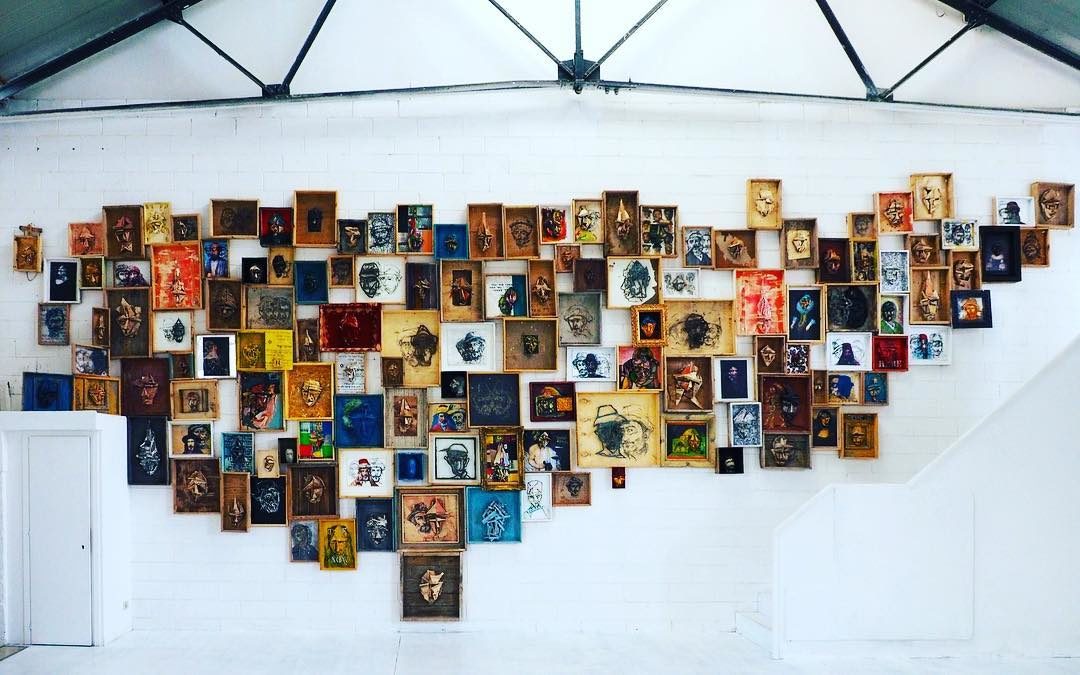If it’s not a fire, it’s not art: visiting GAD with Pier Paolo Scelsi
On the Giudecca Island (Venice), right in front of the canal of the same name, extends the GAD, the Giudecca Art District.
The SpeakART team had the opportunity to visit the spaces dedicated to the district with two exceptional guides: the director, Pierpaolo Scelsi and the communications manager, Elisa Covre.
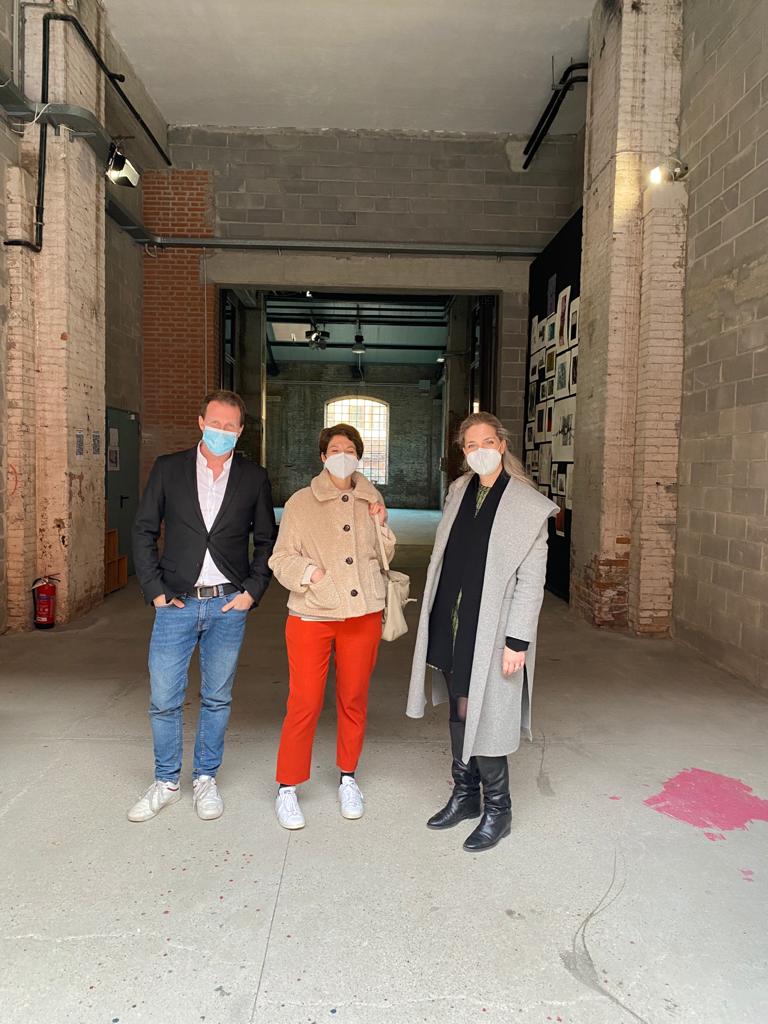
Pier Paolo Scelsi – GAD director, Elisa Covre – communications manager at GAD and Angelica Maritan, founder of SpeakART
From that meeting was born the interview which we propose below, with the director Scelsi.
SpeakART: The Gad was born from the desire to expand the experience of One Contemporary Art, but the network that you have created also has the aim of helping to enhance the territory. Several years after its foundation, what were the results? How has replied the community?
P.P.S :The first steps of the GAD project saw the light in 2017 when, after two years of activity, the One Contemporary Art association recognizes in Giudecca the space for a long-term project and identified its own dimension in this island as a “starting point “. We have arrived at GAD through two years of interventions and constant structuring that saw the first spark in the exhibition “Jack Jano, Law of Superposition” then passing through two years of subsequent interventions, made up of constant planning, and an equally constant positioning of our identity within the vast and very rich proposal of contemporary art in the city of Venice.
The relationship with the city is very important for us since our “core mission” as the GAD project, which is to create a dialogue between the contemporary element and the artisan identity of the spaces where we go to intervene, setting up a network, a “district” of international partners that sees Venice as its own point, a meeting place for production and research.
In 2019, with the propulsive thrust of Biennale Arte, the project almost physiologically expanded and found its natural dimension, in May 2019 we have proposed a vast program that at the end of the cycle involved more than 60 international artists and 15 coordinated exhibitions and in many cases curated by us, by our original staff to which precious new elements have been added. 2020 was an odd year, of stagnation and freezing of the original programming for many actors from the sector of culture and contemporary art. We have tried to transform this emergency into an opportunity, and in upsetting our original schedule, imagined in continuity with the Architecture Biennale, we have turned to and dedicated ourselves to weaving a network of collaborations with the institutions of our territory, from the city of Venice.
With this philosophy born 222.Prospettiva Comune, an exhibition brought by GAD in June 2020 which involved three winners of the atelier of Bevilacqua la Masa Foundation’s competition announcement, subsequently it was important and pleasant for us to host Cecilia Jansson in the workshop, project “Superamenti” project co-organized by the Peggy Guggenheim Collection and the Swatch Art Piece Hotel, just as the collaboration with the Academy of Fine Arts of Venice was very important for us, an institution that we have involved, through the students of two ateliers, in “Everybody’s got something to hide except me and my monkey”. For us the city where we are placed is certainly not only a “frame”, the best imaginable for those who want to embark on a path in contemporary art, but it is also a necessity, a continuous interlocutor, a fragile dimension that becomes and it is proposed on an ongoing basis as a source of ideas, suggestions, research directions.
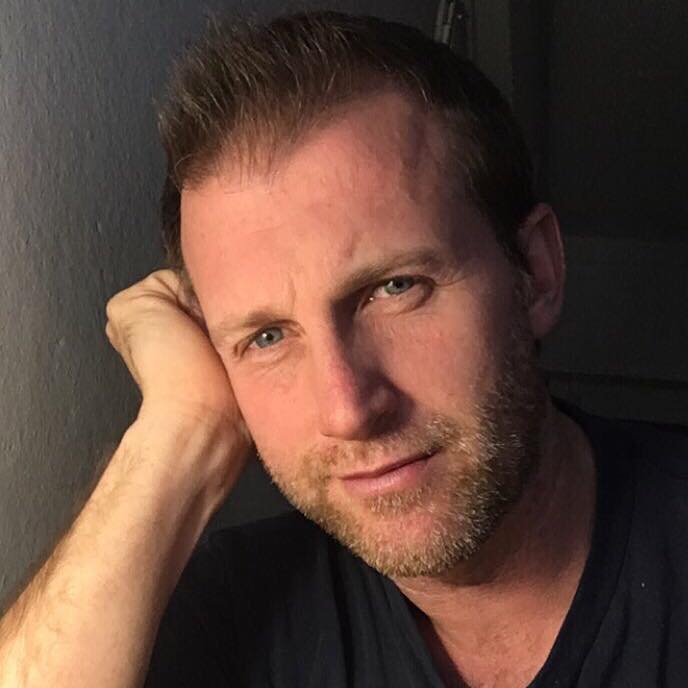
Pier Paolo Scelsi, Director of GAD – Courtesy of GAD
SpeakART: The GAD hosts 60 artists from 30 different countries, these are truly impressive numbers. What are the secrets – if there are any – in order to maintain such a network of connections?
P.P.S : We believe that the secret lies in dynamism, in being able to tell and propose what is being done, our identity as a continuously written page in which our interlocutors can bring their “text”.
We work by selecting the interlocutors, getting to know them, looking for a common point with them that can turn into that “spark”, that starting point that is the basis of any long-term projection of one’s work.
Another secret, without hiding it but it is the first strength, lies in the fact that we are a harbinger and a dowry of the city we live in and on which we operate. Venice is for everyone a professional arrival point, a “place to be”, a city where you can work side by side with the most important international institutions that have their headquarters in our city, and side by side with the most important event on the world scene of contemporary art.
We try to do it in a proactive and constructive way, telling a part of the city that still lives and works, far from the dimension of mass-tourism and the “postcard”, and this is also an element that leads to an attention that elsewhere would be different.
SpeakART: Yours is therefore a cultural proposal that ranges from national artists to international. What was the feedback from the artists towards a reality like the one of the GAD? Did you notice some difference in approach by Italians and no?
P.P.S: We have worked with large institutions, with international galleries, with artists who talked about different experiences, different mediums and different approaches.
Let’s say that personally I would not divide the differences by origin, but in the habit of collaboration and habit and inclination to work on external projects from the classic space of the museum or gallery.
Being at GAD does not mean being inside a container, but it means having necessarily to play in a dimension where the cultural and social fabric must be intercepted and must become an integral part of each project.
When this does not happen, it becomes a missed opportunity.
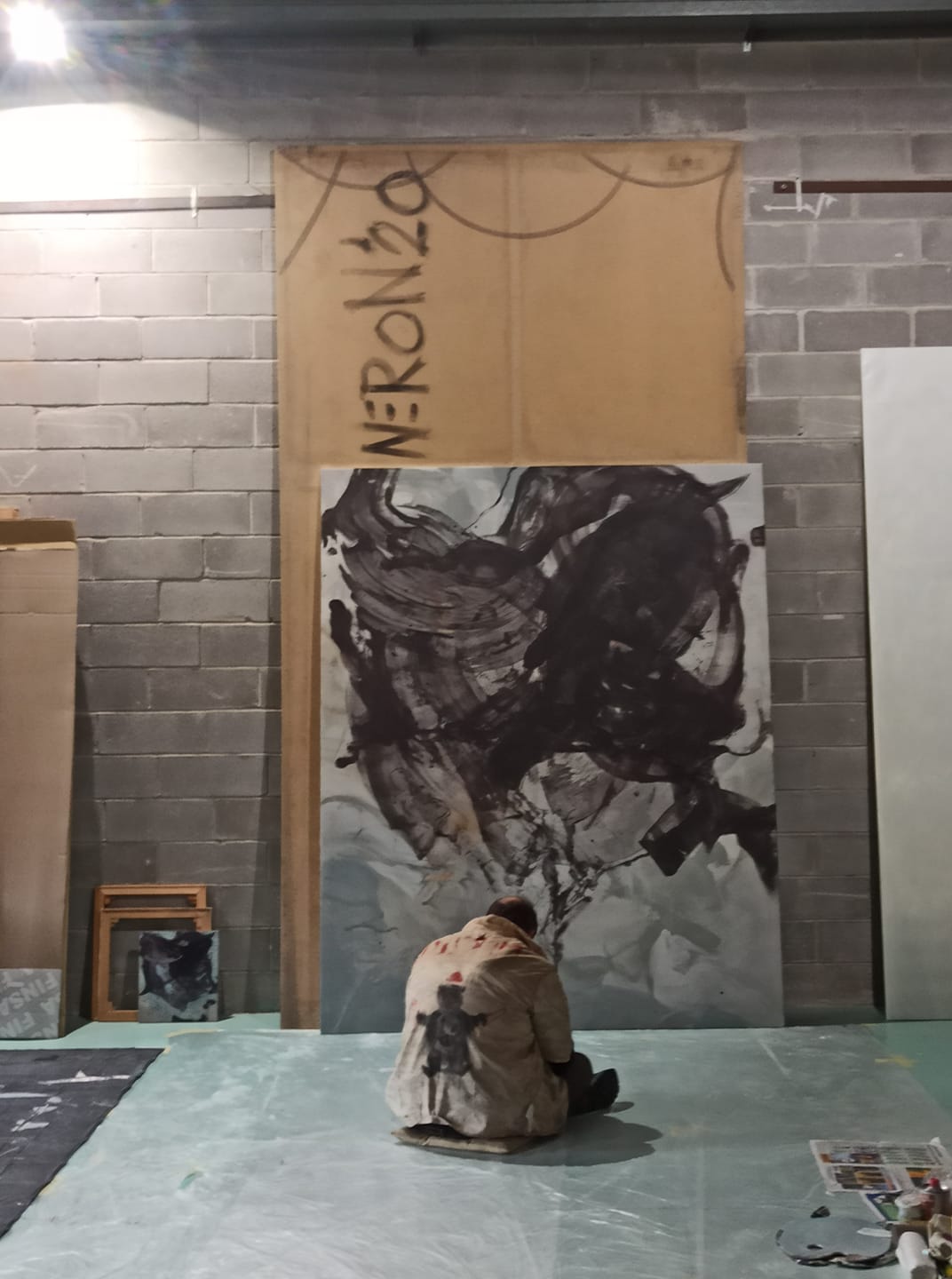
The artist Alessio Bertolo working at GAD – Courtesy of GAD
SpeakART: Giudecca, understood as a place of culture, is often overshadowed by real historical center of Venice. You also work to ensure that this status quo change. Can art be the turning point in this sense?
P.P.S: Absurdly, I think that nowadays and during the post-covid period, work will have to be done to recover the historic center as a space and place for the production of culture, maybe by putting Universities, Institutions and Associations in the system. Giudecca has a very important cultural history that certainly did not begin with us, there are and have been many experiences that on this island, which is the natural director of a path that leads from Zitelle to Sacca Fisola, have opened towards the city.
But it is precisely the “Historic Center”, the Rialto-San Marco route in the last ten / twenty years has profoundly changed, adapting, declining and bowing to the dimension of mass tourism “just to flag” of which the city of Venice is a victim.
A tourism that is expelling residents, a tourism often unfocused on the cultural fervor of a place, interested only in the folk dimension, realizing the “abstract” of what it is to live as a traveler in Venice.
A city whose center is desertified by its own contemporary identity in order to be completely absorbed by the “Venice product” to be sold in every way and manner is a city that makes even its suburbs “poor”, which today are fervent and active spaces. Excluding the large Institutions, Foundations and Museums that have their offices in the historic center, there are “pockets of cultural resistance” in this city, and in my opinion one of these is Giudecca and its plurality of offers of which GAD is a small piece.
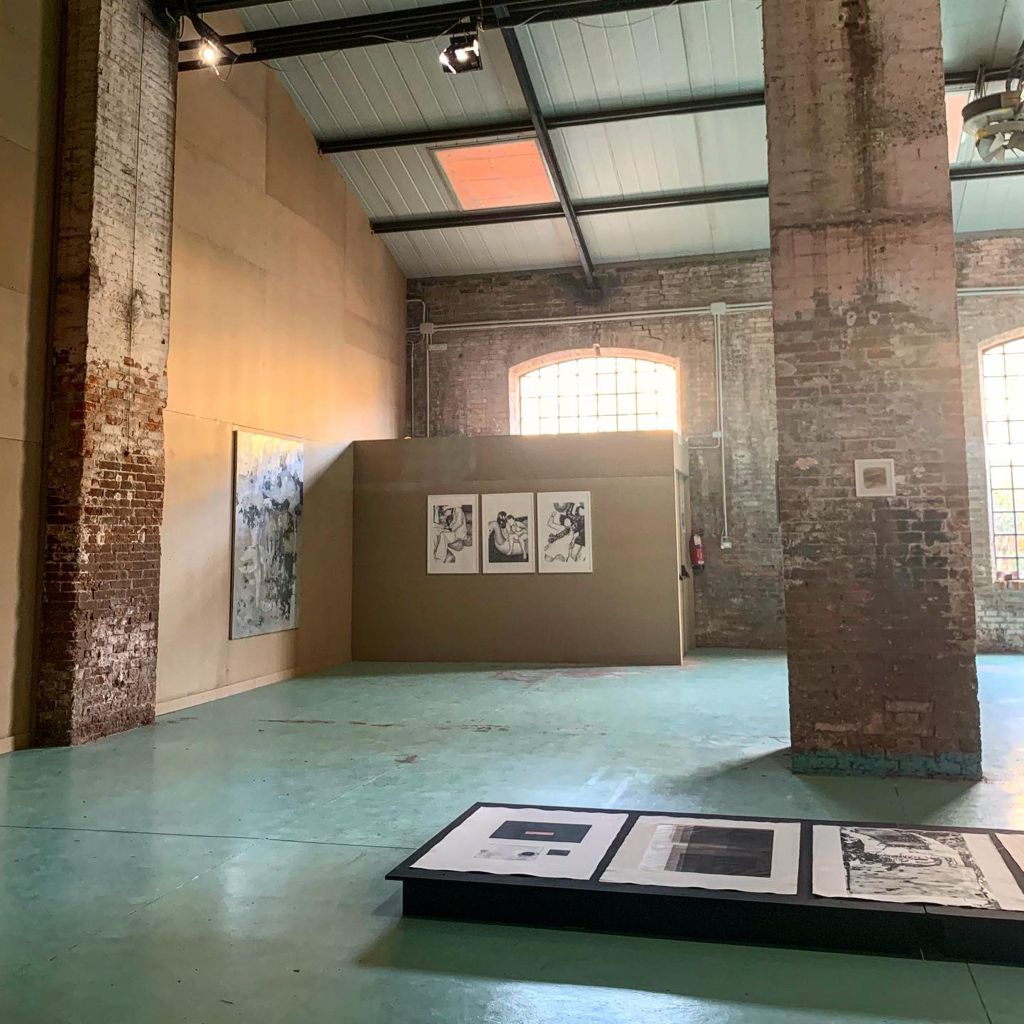
GAD, Legno&Legno spaces
SpeakART: Among the various projects curated by the GAD, we have also seen the part of Artist in residence. To offer artists a place where they can create and reflect freely and unconditional is essential. How was this project born and how is it progressing?
P.P.S:The one of artists’ residences, is a project we care a lot about and which, as you can well imagine, had a setback in 2020-2021 due to the Covid 19 emergency which made it impossible to travel and made these experiences of interchange.
Currently, we are working to give light to a triangulation project between institutions in Venice, Buenos Aires and Warsaw in order to make this proposal structured and continuous from 2022.
We are aware that a project of this kind implies a capillary and detailed drafting of the proposal, the artists and curators benefit a lot from these projects when they are well organized and involve a real immersion in the cultural and social fabric of a city and we are convinced that Venice is still a space of suggestion and research that can be offered, it was such at the time of the Grand Tour and it can still be today.
SpeakART: Let’s talk about digitization. From an innovative and young reality which you are, which is yours point of view on the art / technology relationship: to what extent do you believe that the latter, not conceived as a simple cataloging of works of art, is it effective in the world of art?
P.P.S: We live in the second decade of the 2000s, this historical period provides us with tools of communication, research and artistic production which were, in other times, unknown, not only in the field of the arts but in all social and professional activities. As cultural operators, if we do not want to live in a perennial and anachronistic “nostalgia” for the past, we simply have to understand how to approach and use them not becoming “an end” but remaining a “medium”.
The “new technologies”, which – just to be clear – often remain “new” just long enough to catalog them as such because in the meantime everything is moving forward in a continuous process of discovery and overtaking, are indispensable and very useful not only for those who, artists, decide use them as an instrument of one’s own research, but also in the act, which for those who define themselves as “curators” or “art historians” is due, to “leave traces”, to “create stories” by passing through scientific research.
Cataloging and communication, which we have always identified in the essential object that is the “Catalog”, there is no doubt that they find agile tools, pills that are easy to consult and useful to spread even in a digital elsewhere than the pages of a book.
The catalogation ,obviously, has already taken this direction, the disclosure physiologically follows the same steps.
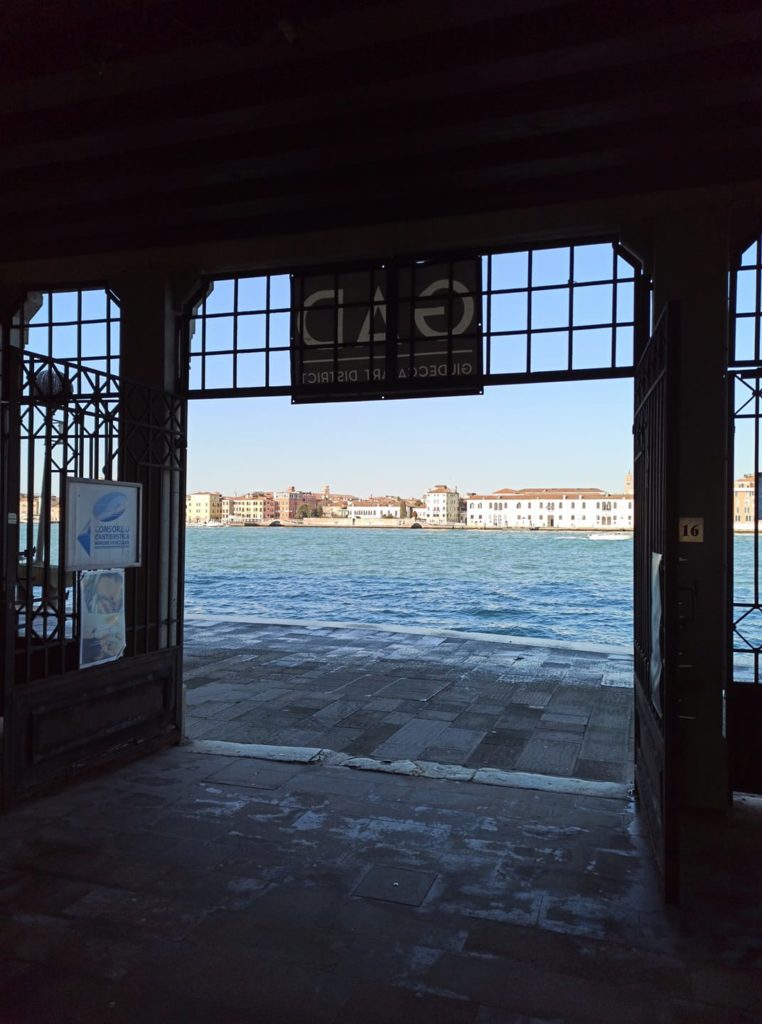
GAD entrance (from the inside) – Courtesy of GAD
SpeakART: Digital in art has been fundamental since the start of the Covid-19 pandemic. Like did the GAD behave? What kind of content and / or social platforms did you prefer?
P.P.S: On this issue my personal opinion is quite “extremist” and as such I propose it and make it available for criticism and doubts.
Personally I believe that the world of Contemporary Art, which in the last twenty years has been told in the history of great exhibitions and major events, cannot ignore the “social” element and moment.
The presence, the experience, the being there, the moving and traveling is something that cannot be replaced through digital means which we have stocked up during last year.
Exactly like the school which, quoting Massimo Cacciari “It is social, cannot be replaced by a monitor or a tablet”, also the art world, in my opinion, does not exist without the social dimension, without the interaction between man and artwork and man-man who is the basis of our job.
Digital mediums are phenomenal tools of knowledge, of “first touch”, and of dissemination and promotion, but they are and must remain this. In the last year almost all the actors in the art world have tried to transfer their business to this virtual space and the difficulty and, in some cases, the futility of the result has not paid for the incredible efforts made.
Virtual Fairs, Exhibitions, Digital Biennials, and not “digital art”, have flourished but with poorly hidden modest results that we all know.
In this “hold your breath” waiting to start again, as GAD we decided to take advantage of our social channels to create on the one hand a cataloging of the work done: interviews with the artists involved in our exhibitions rather than communication of our project, and on the other hand to create a climax, a path that leads to the events that we will host in 2021 by GAD.
With this in mind, the cycle of talks, meetings, conferences entitled “The Space we Live In” was born, a discussion path around the theme of the space in which we live in preparation for the installation of the same name by the German artist Markus Heinsdorff that we will host in Giudecca from next May. In Partnership with Coop Alleanza 3.0 and with the Consulate General of the Federal Republic of Germany we have opened our social channels to 5 moments of reflection and presentation and in the first two events, also using our social pages which to date have 14,500 followers on Facebook and 2100 on instagram, we managed to reach an audience of more than 80,000 people.
Our hope is that a small small part of them will then come to meet us in person, to see Markus’s installation, to visit Giudecca and GAD.
SpeakART: The exhibition that is currently underway in the Legno & Legno spaces “Everybody’s got something to hide except me and my monkey” is in collaboration with the Academy of Fine Arts of Venice. You have decided to show off some students, including some at their first real exhibition experience, giving them an opportunity to emerge in the artistic landscape. How important is it to give space to young people?
P.P.S: It is essential to give artists a voice, to create opportunities, to tear the veil that often relegates those who make art to an eternal antechamber or waiting room.
We live in a system where we often find ourselves being referred to as a “young man” at forty-odd years old. This is the clear example of how this system has obvious flaws, especially in light of the fact that the term “young”, very often in the intention of those who use it, does not mean “fresh”, “lively”, but implies the terrible meaning of “immature”, “unprepared”.
It is part of GAD’s identity to “create” opportunities, both by addressing artists, and by making our structure and experience available to those who approach GAD seeing in their future the profession of curator or cultural operator.
One of our strengths, and for me it is a point of pride, is the fact that of 9 elements that make up this group, 5 have approached us first with an intership and then become attached to and identify with what we are doing.
This last mentioned exhibition, for example, sees me and Francesca Mavaracchio as curators, who arrives at GAD precisely through this path of knowledge and ultimately involvement. And for me, involvement also means trust and sharing of responsibility.
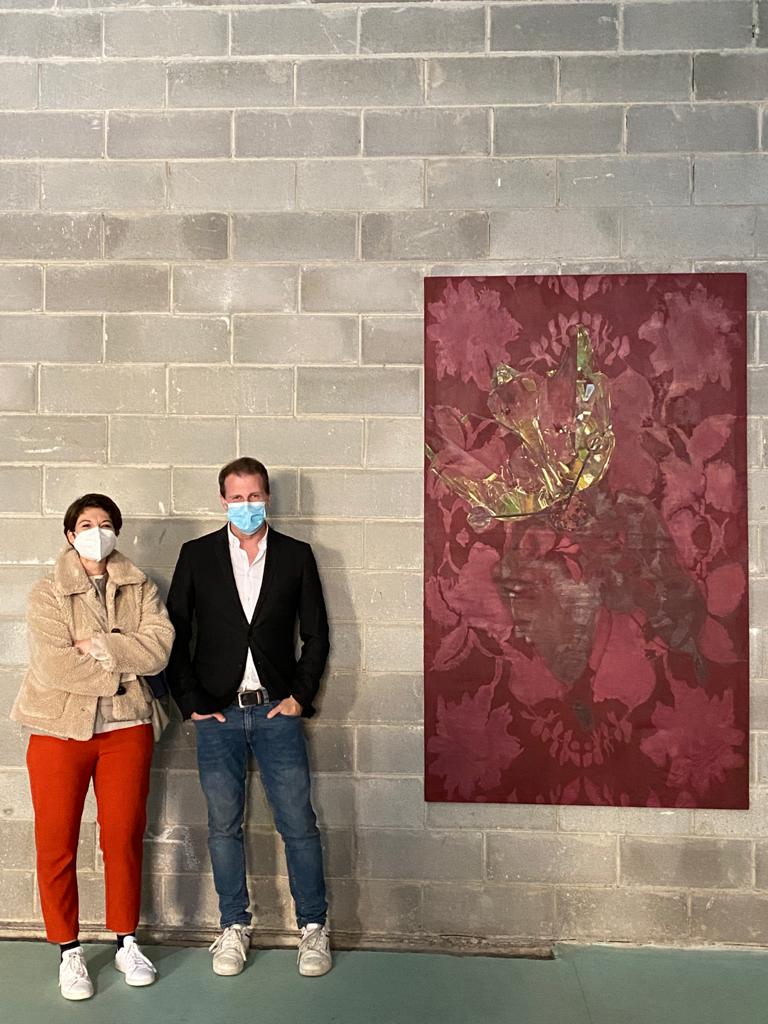
Elisa Covre and Pier Paolo Scelsi in front of Giulia Gabellone’s artwork “Heart of Glass”, one among those exhibited at “Everybody’s got something to hide except me and my monkey”
SpeakART: . Remaining on the exhibition, the title is also that of a Beatles song from an album of 1968. What are the reasons behind this choice?
P.P.S: On the one hand, this title assumes in the same concept the two main capacities of art and visual arts: being the most immediate strong, direct tool for the narration of reality, and simultaneously being the only human mean in order to transcend reality and to project oneself into the dimension of the “fantastic”. The Beatles’ monkey is also the metaphor of a psychedelic dimension where everything becomes amplified, where one is completely immersed, involved and overwhelmed by a passion. And imagining an exhibition with the students of the academy, we could not imagine not telling about this status, this “hunger”.
But even for someone like me who is a little older, “suffering”, this living at maximum speed, is something that leads to being “alive” and strips us of any capacity for masking, makes us lose all ability to hide and hide.
In my opinion, those who experience art can only experience it like this, as a love, a passion, a fire.
If “it is not a fire” it is not.
If you don’t live the world of art with the “monkey on your shoulder”, we are simply doing something else.
